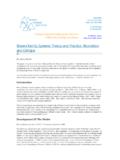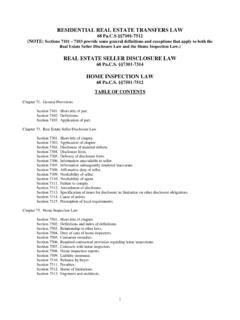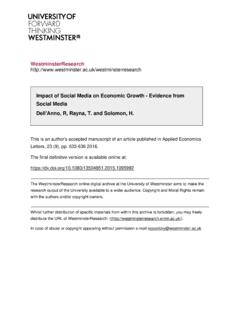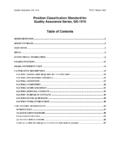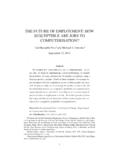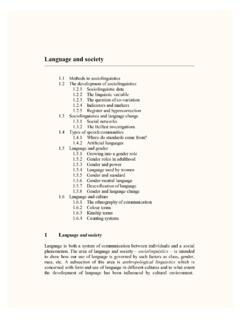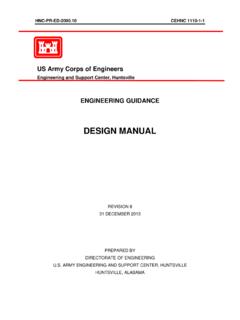Transcription of Bowen Family Systems Theory and Practice: Illustration and ...
1 Head Office 30 Grosvenor Street, Neutral Bay, NSW 2089 Ph: 02 9904 5600 Fax: 02 9904 5611 Coming to grips with Family Systems Theory in a collaborative, learning environment. Bowen Family Systems Theory and Practice: Illustration and Critique By Jenny Brown This paper will give an overview of Murray Bowen s Theory of Family Systems . It will describe the model s development and outline its core clinical components. The practice of therapy will be described as well as recent developments within the model. Some key criticisms will be raised, followed by a case example which highlights the therapeutic focus of Bowen s approach. This is the author s version of the work. It is posted here by permission of Australian Academic Press for personal use, not for redistribution. The definitive version was published in Australian and New Zealand Journal of Family Therapy (ANZJFT) 1999 pp 94-103). Introduction Murray Bowen 's Family Systems Theory (shortened to ' Bowen Theory ' from 1974) was one of the first comprehensive theories of Family Systems functioning ( Bowen , 1966, 1978, Kerr and Bowen , 1988).
2 While it has received sporadic attention in Australia and New Zealand, it continues to be a central influence in the practice of Family therapy in North America. It is possible that some local Family therapists have been influenced by many of Bowen 's ideas without the connection being articulated. For example, the writing of Guerin (1976, 1987), Carter and McGoldrick (1980, 1988), Lerner (1986, 1988, 1990, 1993) and Schnarch (1991, 1997) all have Bowenian Theory at the heart of their conceptualisations. There is a pervasive view amongst many proponents of Bowen 's work that his Theory needs to be experienced rather than taught (Kerr, 1991). While this may be applicable if one can be immersed in the milieu of a Bowenian training institute, such an option, to my knowledge, is not available in this country. Bowen 's own writings have also been charged with being tedious and difficult to read (Carter, 1991).
3 Hence it seems pertinent to present this influential Theory in an accessible format. Development Of The Model Murray Bowen was born in 1913 in Tennessee and died in 1990. He trained as a psychiatrist and originally practised within the psychoanalytic model. At the Menninger Clinic in the late 1940s, he had started to involve mothers in the investigation and treatment of schizophrenic patients. His devotion to his own psychoanalytic training was set aside after his move to the National Institute of Mental Health (NIMH) in 1954, as he began to shift from an individual focus to an appreciation of the dimensions of families as Systems . At the NIMH, Bowen began to include more Family members in his research and psychotherapy with schizophrenic patients. In 1959 he moved to Georgetown University and established the Georgetown Family Centre (where he was director until his death). It was here that his developing Theory was extended to less severe emotional problems.
4 between 1959 and 1962 he undertook detailed research into families across several generations. Rather than developing a Theory about pathology, Bowen focused on what he saw as the common patterns of all 'human emotional Systems '. With such a focus on the qualitative similarities of all families, Bowen was known to say frequently, 'There is a little schizophrenia in all of us' (Kerr and Bowen , 1988). In 1966, Bowen published the first 'orderly presentation' of his developing ideas ( Bowen , 1978: xiii). Around the same time he used his concepts to guide his intervention in a minor emotional crisis in his own extended Family , an intervention which he describes as a spectacular breakthrough for him in Theory and practice ( Bowen , 1972 in Bowen , 1978). In 1967, he surprised a national Family therapy conference by talking about his own Family experience, rather than presenting the anticipated formal paper.
5 Bowen proceeded to encourage students to work on triangles and intergenerational patterns in their own families of origin rather than undertaking individual psychotherapy. From this generation of trainees have come the current leaders of Bowenian Therapy, such as Michael Kerr at the Georgetown Family Center, Philip Guerin at the Center for Family Learning, Betty Carter at the Family Institute of Westchester, and Monica McGoldrick at the [Multicultural] Family Institute of New Jersey. While the core concepts of Bowen 's Theory have changed little over two decades, there have been significant expansions: the focus on life cycle stages (Carter and McGoldrick, 1980, 1988) and the incorporation of a feminist lens (Carter, Walters, Papp, Silverstein, 1988; Lerner, 1983; Bograd, 1987). The Theory Bowen 's focus was on patterns that develop in families in order to defuse anxiety. A key generator of anxiety in families is the perception of either too much closeness or too great a distance in a relationship .
6 The degree of anxiety in any one Family will be determined by the current levels of external stress and the sensitivities to particular themes that have been transmitted down the generations. If Family members do not have the capacity to think through their responses to relationship dilemmas, but rather react anxiously to perceived emotional demands, a state of chronic anxiety or reactivity may be set in place. The main goal of Bowenian therapy is to reduce chronic anxiety by 1. facilitating awareness of how the emotional system functions; and 2. increasing levels of differentiation, where the focus is on making changes for the self rather than on trying to change others. Eight interlocking concepts make up Bowen 's Theory . This paper will give an overview of seven of these. The eighth attempts to link his Theory to the evolution of society, and has little relevance to the practice of his therapy. [However, Wylie (1991) points out in her biographical piece following Bowen 's death that this interest in evolutionary process distinguishes Bowen from other Family therapy pioneers.]
7 Bowen viewed himself as a scientist, with the lofty aim of developing a Theory that accounted for the entire range of human behaviour and its origins.] 1 - Emotional Fusion and Differentiation of Self 2 - Triangles 3 - Nuclear Family Emotional System 3a. Couple Conflict 3b. Symptoms in a Spouse 3c. Symptoms in a Child 4 - Family Projection Process 5 - Emotional Cutoff 6 - Multi-generational Transmission Process 7 - Sibling Positions 1 - Emotional Fusion and Differentiation of Self 'Fusion' or 'lack of differentiation' is where individual choices are set aside in the service of achieving harmony within the system. Fusion can be expressed either as: * a sense of intense responsibility for another's reactions, or * by emotional 'cutoff' from the tension within a relationship (Kerr and Bowen , 1988; Herz Brown, 1991). Bowen 's research led him to suggest that varying degrees of fusion are discernible in all families.
8 'Differentiation', by contrast, is described as the capacity of the individual to function autonomously by making self directed choices, while remaining emotionally connected to the intensity of a significant relationship system (Kerr and Bowen , 1988). Bowen 's notion of fusion has a different focus to Minuchin's concept of enmeshment, which is based on a lack of boundary between sub- Systems (Minuchin, 1974). The structural terms 'enmeshment' and 'disengagement' are in fact the twin polarities of Bowen 's 'fusion'. Fusion describes each person's reactions within a relationship , rather than the overall structure of Family relationships. Hence, anxiously cutting off the relationship is as much a sign of fusion as intense submissiveness. A person in a fused relationship reacts immediately (as if with a reflex, knee jerk response) to the perceived demands of another person, without being able to think through the choices or talk over relationship matters directly with the other person.
9 Energy is invested in taking things personally (ensuring the emotional comfort of another), or in distancing oneself (ensuring one's own). The greater a Family 's tendency to fuse, the less flexibility it will have in adapting to stress. Bowen developed the idea of a 'differentiation of self scale' to assist in teaching this concept. He points out that this was not designed as an actual instrument for assigning people to particular levels (Kerr and Bowen , 1988: 97-98). Bowen maintains that the speculative nature of estimating a level of differentiation is compounded by factors such as stress levels, individual differences in reactivity to different stressors, and the degree of contact individuals have with their extended Family . At one end of the scale, hypothetical 'complete differentiation' is said to exist in a person who has resolved their emotional attachment to their Family (ie. shifted out of their roles in relationship triangles) and can therefore function as an individual within the Family group.
10 Bowen did acknowledge that this was a lifelong process and that 'total' differentiation is not possible to attain. 2 - Triangles Bowen described triangles as the smallest stable relationship unit (Kerr and Bowen , 1988: 135). The process of triangling is central to his Theory . (Some people use the term 'triangulation', deriving from Minuchin (1974: 102), but Bowen always spoke of 'triangling'.) Triangling is said to occur when the inevitable anxiety in a dyad is relieved by involving a vulnerable third party who either takes sides or provides a detour for the anxiety (Lerner, 1988; James, 1989; Guerin, Fogarty, Fay and Kautto, 1996). An example of this pattern would be when Person A in a marriage begins feeling uncomfortable with too much closeness to Person B. S/he may begin withdrawing, perhaps to another activity such as work (the third point of the triangle). Person B then pursues Person A, which results in increased withdrawal to the initial triangled-in person or activity.
